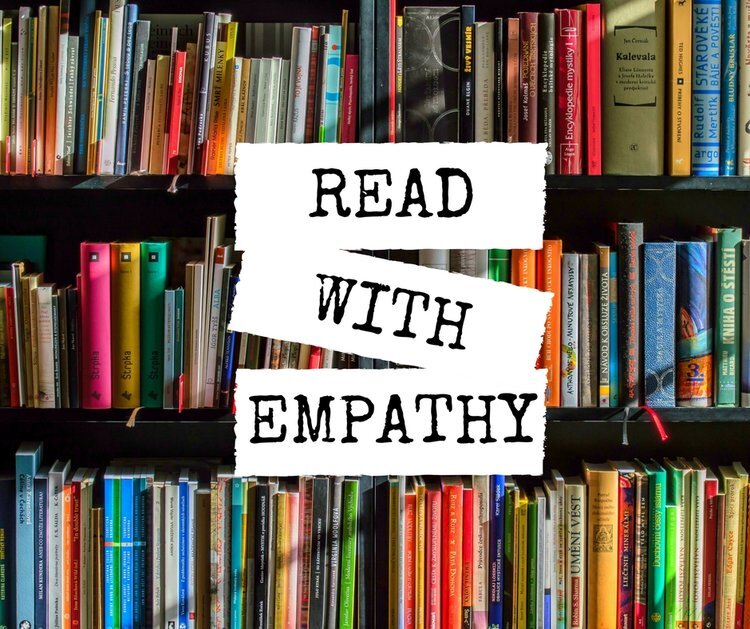Why Stories Matter and How to Use Them to Make a Difference
Stories are powerful – and innately human. They help us understand one another, provide windows into different cultures and time periods, and increase our capacity for empathy. Because they hold great power, the stories kids hear make a difference in how they perceive the world. Sharing stories – from books, podcasts, our even our own histories – can influence culture and gender roles, teach new perspectives, provide insight, and allow children to better understand themselves and others. Not surprisingly, studies show that stories can also increase children’s prosocial behaviors. Here are some ways to amplify the power of storytelling within your family.
– Jenny Friedman, Executive Director
ACTION
Tell family stories. Developing a strong family narrative lets children know they belong to something bigger than themselves. Talk to your kids about your family’s past successes and challenges. Share your own childhood adventures (and misadventures) and have your parents and other older relatives do the same.
Choose widely. Offer your children a whole range of books. Choose titles that bring visibility to – and understanding of – varying experiences, abilities, nationalities, beliefs, cultures, and ethnicities. Stories are one of the most important ways to teach children about diversity, equity, and inclusion.
Share books. You can help ensure that every child has access to wonderful stories. Build a Little Free Library and join their Read in Color initiative. Donate your gently used children’s books to a local family shelter or under-resourced early childhood program. And consider donating to your local library or to literacy organizations such as Reach Out and Read, Books for Africa, and Reading Is Fundamental.
Listen to stories. Kids had enough of screens? Try these kid-friendly storytelling podcasts: Peace Out, NPR’s Circle Round, and PBS’s Molly of Denali. See Common Sense Media for more great podcast recommendations.
Create your own story. Family members can whip up their own stories with this fun zine-making project. Just grab a piece of 8.5 x 11-inch paper, scissors, and drawing and/or collage materials. View this simple video tutorial. Then use words and images (or any inventive style you want) to create a story to share.
Moveable Feast. Sure, it’s nice to read or tell stories on your couch or in bed, but every now and then change it up. Depending on the season, share stories in a hammock, in a tent, under a tree, in a tree, in the bathtub, in the dark with a flashlight, by a campfire, in a closet, at the store, on a porch swing, at a coffee shop (hopefully soon!), at the park, or at the library.
Become an Interviewer! Together with your kids, watch this animated video about how Story Corp got started. Talk about which family members or friend you’d like to get to know better, then ask if you can interview them. You can record your conversations from anywhere using the Story Corp App or Story Corp Connect. Prepare ahead of time with 6-8 questions that you (or your child) would like to ask. (Here’s a list of possible questions.) After your conversation, share what you learned, what surprised you most – then pick another loved one whose story you want to hear. You can choose to have your interviews archived at the Library of Congress – or keep them private.
TALK
Get in the habit of asking a question or two each time you read or tell stories with your kids, such as:
Did you enjoy this story? Why or why not?
What challenge was the main character facing? How would you have reacted in that situation?
How did the main character feel at key moments throughout the story? How would you have felt at each of these moments?
What do you think about how the main character faced the main conflict? What else could he or she have done?
How might this story be different if it were set in a different culture or time?
Do you know anyone in real life who reminds you of a character in this story? Who and in what way?
What would you change about this story if you wrote it? Let’s take a moment to imagine your version.
Does this story remind you of other stories you’ve read? How are they the same? Which story did you enjoy more? Why?
BOOKS
Doing Good Together has collected a great many stories on a variety of critical topics. Check out our carefully curated lists on DGT’s Read with Empathy page.
INSPIRATION
“You’re never going to kill storytelling because it’s built into the human plan. We come with it.”
—Margaret Atwood, poet, novelist, and literary critic









